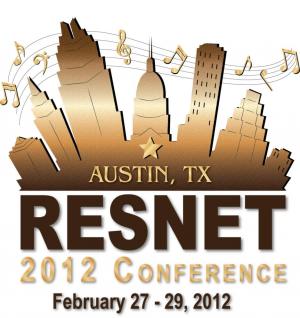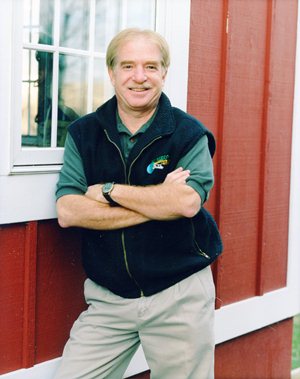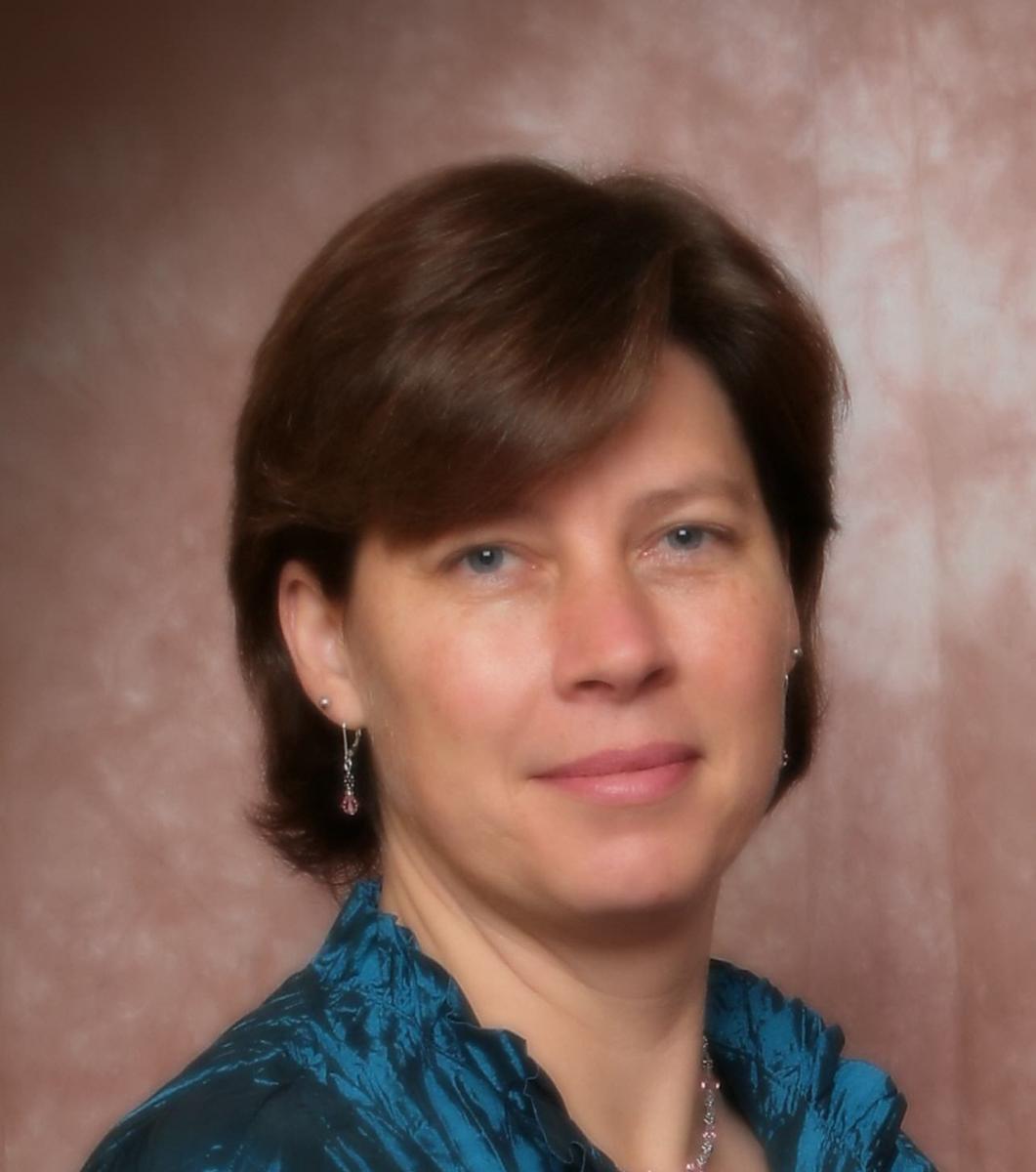- The SAVE Act Arrives At Last
- Green Builder® Coalition to Host 1st Annual Member’s Meeting
- Green Builder® Coalition Session Selected for RESNET 2012
- Impact Series
- As I Am… Debbie Hendrickson
- Benefit Spotlight – Sustainable Shirts
- Job Opportunities
- Train of Thought
Activities
The SAVE Act Arrives At Last
The Green Builder® Coalition lauded the arrival of the Sensible Accounting to Value Energy (SAVE) Act last week. Introduced by Sens. Bennet (D-CO) and Isakson (R-GA) last week, this will positively affect homebuyers, homebuilders, mortgage lenders, and the power grid. It is our hope that this non-partisan bill (S. 1737) will be able to pass, as it does not require any federal spending.
To read our press release on this long-needed legislation, please click here.
For a thorough summary of the bill, please visit here.
Green Builder® Coalition to Host 1st Annual Member’s Meeting
 Held in conjunction with the IgCC Final Action Hearings in Phoenix, the Green Builder® Coalition will hold its 1st annual member’s meeting on Tuesday, November 1st. Coalition staff will be on hand to present a review of our first year. There will also be information shared on a variety of topics related to advocacy, finance and new initiatives for 2012.
Held in conjunction with the IgCC Final Action Hearings in Phoenix, the Green Builder® Coalition will hold its 1st annual member’s meeting on Tuesday, November 1st. Coalition staff will be on hand to present a review of our first year. There will also be information shared on a variety of topics related to advocacy, finance and new initiatives for 2012.
We will make the presentations available to our members after the meeting. Members should keep an eye on their inbox for further details.
Appearances
Green Builder® Coalition session Selected for RESNET 2012
We are happy to announce that the Green Builder® Coalition was selected to present a breakout session at the 2012 RESNET Conference. Titled “Three Essential Components of a Successful Green Business”, the 90-minute session will be presented by Ron Jones, Board Chairman, and Mike Collignon, Executive Director.
According to Laurel Elam, Program Manager for RESNET, there were over 200 submissions for sessions ranging in length from 90 minutes to 4 hours. All entrants were put on a ballot, and a public vote was conducted, with the voters only able to select a maximum of 10 nominations. The Coalition had submitted 3 sessions, and we are honored and humbled that one was chosen by the voters.
The RESNET 2012 conference is scheduled for February 27-29, 2012 in Austin, TX. The theme is, “Let’s Get Down to Business.” For complete conference information, please click here.
We hope to see you there.
 In the most recent edition of the Impact Series, Barney Feinblum shared key insights about how to successfully reach consumers with impactful sustainability messaging.
In the most recent edition of the Impact Series, Barney Feinblum shared key insights about how to successfully reach consumers with impactful sustainability messaging.
Feinblum is the co-founder of Alfalfa’s and serves as the company’s Chief Financial Officer. Barney is also a managing director of Greenmont Capital Partners and serves on its investment committee. Before bringing Alfalfa’s back to Boulder, he was the founder and President of Organic Vintners, America’s premier importer of organic wines. Prior to that, he served as President and CEO of Horizon Organic Dairy, and led the company through its initial public offering.
To view archived editions of the webinar series, please click here.
As I Am…
 Debbie Hendrickson
Debbie Hendrickson
Each issue, we’ll sit down with a green building professional to gain a personal insight into their motivations, inspirations and experiences. This issue, we feature Debbie Hendrickson.
The Torch: What motivated you to enter the sustainability industry?
Debbie Hendrickson: It was a natural progression of my personal choices and passion for creating beautiful, healthy, and ‘earth friendly’ spaces migrating into my work. I was very happy when ‘green’ started moving into the building industry. There was so much waste that I saw in building just one house. I felt there was something fundamentally wrong with the process when one of the typical steps in building a house was to have a dumpster on site. What a waste of resources.
Then there was working with products with all the toxins in them on a daily basis that began bothering me as well. I asked myself the question, if I don’t like working with and having these things around me why would I bring it to my customers?
When I began working in the nonprofit affordable housing sector, it intensified my resolve to bring these building practices to a segment of our population that is typically forgotten.
TT: Describe your first green project. Did you encounter any hurdles on that first project? If so, how did you overcome them?
DH: Initially, we just did a series of small improvements to our build process like installing CFL’s instead of incandescent bulbs or doing smart framing to increase insulation and reduce lumber usage. But my first ‘official’ green project was to make sure all our houses passed Energy Star Certification that year. One of the most useful things was finding a good HERS Rater. He helped me immensely with the process. I researched on my own, took classes and went to seminars to learn what I needed.
One surprising thing I found was that there were not a lot of contractors who knew much about how to pass these Certifications. I, and the rater, had to tell them what they needed to do to pass. I had to learn more about the HVAC field than I ever wanted!
TT: What building product or technique do you think will be the next “game changer”?
DH: I think a “game changer” would be a shift in the way we build the structure itself. How we can design the house or building to work with the natural elements, weather patterns, and community around it as opposed to bringing in high tech, complicated, expensive equipment. I am not against technology assisting us in our comfort and health but if we can first design and build with every available passive, simple, ‘low tech’ method for reducing energy usage, increasing water efficiency, maximizing comfort level, resource management, and land usage why not? Then we can add the other to bump up the efficiency even more.
TT: Who inspires you the most?
DH: I am inspired by those individuals who have a genuine care and concern for the planet we live on and our fellow human beings that we share it with, and their actions and deeds reflect this care and concern. In other words, they walk their talk.
TT: If you had it to do over again, what profession would you choose?
DH: I would still be building homes but instead of just focusing on the structure itself, I would expand the scope of that to include the surround lot/property and community. I am in the process of redirecting my work focus in that direction right now. I want to create beautiful and functional living spaces that extend beyond the walls of a building to the immediate property and beyond.
TT: What do you enjoy the most when you’re not at work?
DH: I enjoy getting together with friends and family doing outdoor activities like bicycling, canoeing, camping, etc. I also like working on my own house and property to make it as self-sufficient as possible.
TT: What’s the most important piece of advice you’d like to pass along to others?
DH: Work together. We are seeing it more and more in communities where people are getting together to change their neighborhoods back into healthy, vibrant places to live. We can accomplish amazing things by working together towards a goal rather than the way of competition.
Benefit Spotlight
Sustainable Shirts
The Green Builder® Store is now offering a selection of apparel to help you look good… while also helping you feel good about the environment. Their shirts utilize a variety of traditional materials in a very green and untraditional manner, including recycled polyester, soybean cotton and certified organic cotton.
They have reduced the price of their Green Builder® Coalition short sleeve and long sleeve T-shirts by $4 for readers of this newsletter. To receive this special, limited time offer, just click here for the long sleeve shirt and here for the short sleeve shirt.
Job Opportunities
Below you will find 8 job postings, for green collar jobs around the country.
If you have a job opening you’d like to list here, please contact the Green Builder® Coalition at info@greenbuildercoalition.org.
CLEAResult (www.clearesult.com), an energy-efficiency company that designs, implements, and evaluates energy-optimization programs on behalf of utilities, is currently hiring construction coordinators. The position owns scheduling in order to assure that we meet our program goals. The job is to last a maximum of six (6) months to support a specific client and program and will end March 31, 2012 and offers full benefits.
Candidates for these positions should have a minimum 5 years’ experience as a residential construction manager, supervisor or project manager, along with extensive knowledge of energy-efficiency technologies, programs and policies. No certifications are required, but State of Michigan IAQ, LSW, LRRP and Weatherization trained are all preferred.
Current energy-engineer openings are in Detroit and Lansing (MI). The following is a direct link to the job descriptions of those two openings:
Detroit and Lansing: http://hiring.accolo.com/job.htm?id=277644617
CLEAResult (www.clearesult.com), an energy-efficiency company that designs, implements, and evaluates energy-optimization programs on behalf of utilities, is currently hiring an energy audit quality control coordinator. This position leads the effort to schedule energy audits in order to assure that we meet our program goals. The job is to last a maximum of six (6) months to support a specific client and program and will end March 31, 2012 and offers full benefits.
Candidates for this position should have a minimum 3 years related experience in consulting engineering, energy services, and/or utility energy efficiency programs, along with extensive knowledge of energy-efficiency technologies, programs and policies; expertise in energy use analysis and energy auditing. No certifications are required, but NEAT, TREAT, State of Michigan IAQ, LSW, LRRP and Weatherization trained is preferred.
This position is located in Detroit (MI). The following is a direct link to the job description:
Detroit: http://hiring.accolo.com/job.htm?id=277663010
If you are interested in any of the above job openings, please contact:
James Hatheway
Recruiter
(512) 259-2383 direct
(512) 586-1573 mobile
jhatheway@clearesult.com
The Appliance Standards Awareness Project (ASAP; www.appliance-standards.org) is a national organization dedicated to advancing appliance, equipment and lighting energy-efficiency standards as a means to save energy, reduce global warming emissions and other environmental impacts, improve energy security and cut consumer energy costs. ASAP runs a national coalition of efficiency standards proponents which includes representatives from energy efficiency, environmental and consumer groups, utilities and state government. ASAP works for energy-saving standards at both the state and national level.
Strategic Program/Technical Analyst – This new position will drive strategy development, analysis and advocacy aimed at advancing energy efficiency for targeted home appliances, lighting products and commercial and industrial equipment. The position will work in close collaboration with other ASAP staff and partner organizations.
It’s preferred the position be located in Washington, DC or Boston, MA. However, they will consider work-from-home arrangements. The position will be filled as soon as a suitable candidate is found. Salary is commensurate with experience, plus a generous benefits package.
To view the full job description, please click here.
To apply, please send a resume and cover letter to job_opening@aceee.org. Please use “ASAP” in the subject header.
Phoenix-based Salt River Project (SRP), the nation’s third-largest public power and water utility, is recruiting for a Senior Program Manager to oversee SRP’s model building energy code & appliance standards initiatives.
In search of an individual with knowledge of and ability to apply technical building science concepts, statistical methods, economic analyses, financial evaluations and cost benefit calculations. Advanced written and oral communication skills. Strong interpersonal skills and the ability to interact with and influence decision makers. Ability to present highly technical data in a manner that facilitates comprehension and decision-making by management, policymakers and other targeted audiences.
Ideal candidate will have five years or more of experience in the field of building design, energy management, sustainability or other applied energy-related experience. This position requires a Bachelor’s Degree in Engineering, Architecture, Marketing, Business Administration or Economics. All candidates must be legally authorized to work in the United States. Currently, SRP does not sponsor H1B visas.
For the complete job description, please click here.
Please apply at our career center online at www.srpnet.com/jobs
The Southeast Energy Efficiency Alliance (SEEA; www.seealliance.org) is a 501(c)(3) nonprofit with the mission of promoting and achieving energy efficiency through networking, program activities, and education. They are looking for a Better Buildings Program Associate to assist the Director of Municipal Energy Efficiency Programs with all tasks related to the effective administration of the Better Buildings Program grant and management of all sub grantee cities. The Associate will also work closely with the entire SEEA team.
The position requires strong project management skills, coupled with the ability to absorb and analyze large amounts of information quickly. There will be considerable exposure to subject matter in a wide variety of fields related to energy efficiency, e.g. finance, marketing, calculations of emissions reductions, workforce development. While the successful candidate may not be an expert in any of these areas, they must find such topics both intellectually interesting and professionally fulfilling.
This position requires sound organizational and communications skills, a demonstrated ability to work independently, to contribute effectively as a member of a team, and to collaborate with other SEEA teams and outside organizations.
Salary is competitive based upon experience. SEEA offers a generous benefits package and a stimulating work environment in Midtown Atlanta convenient to public transit (MARTA) rail and bus routes. Consideration of candidates will begin immediately and continue until the position is filled. SEEA is an equal opportunity employer.
To view the full job description, please click here.
To apply, please send a resume, cover letter, and a writing sample to:
Mandy Mahoney
Southeast Energy Efficiency Alliance (SEEA)
999 Peachtree Street
Atlanta, GA 30309
mandy@seealliance.org
No phone calls please.
The Building Energy Systems and Technologies Group at Pacific Northwest National Laboratory is aligning its technical capabilities and expertise to address our nation’s energy challenges. Our fast-growing group is currently seeking a Senior Residential Building Energy Codes Expert to support the DOE Building Energy Codes Program. Model energy codes and standards are developed in the public and private sectors, adopted and enforced by the public sector and implemented by the building design and construction industry on a national level. DOE funds PNNL to support all facets of building energy code development and implementation.
The successful candidate will serve as an overall subject matter expert in development, implementation and deployment of the residential building energy codes. The successful candidate will also have an expert level understanding of the manner in which model codes and standards are developed in the public and private sectors, adopted and enforced by the public sector and implemented by the building design and construction industry. Working level knowledge of DOE’s Building Technologies (BT) program organization and existing client relationships are desired. The candidate will have the necessary skills and background to serve as an overall subject matter expert in development, implementation and deployment of the residential building energy codes. B.S. degree in engineering, architecture or other related area with 6 years of relevant experience; or a graduate degree (M.S. or Ph.D.) in engineering, architecture or other related area with at least 4 years’ experience; and recognized knowledge of residential building energy codes, their development and implementation, and building energy efficiency policy requirements.
For complete job information, please click here.
To learn more, please contact:
Kristi Ross
Senior Search Consultant
Pacific Northwest National Laboratory
902 Battelle Boulevard
Richland, WA 99352
Tel: 509-372-6317
kristi.ross@pnl.gov
www.pnnl.gov
To apply, please navigate to www.jobs.pnnl.gov and reference job ID 300825.
The Building and Fire Code Academy is currently seeking a full time Energy Code Instructor working from their Hoffman Estates, Illinois office. Duties include updating current training materials, instructing Energy Code Classes. Travel for the training will be required. ICC energy certifications are required.
We require an in-depth knowledge of ICC energy codes and the ability to apply this knowledge in a training environment. The candidate must also have the ability to update PowerPoint presentations and corresponding workbooks. Applicants must have 3-5 years’ experience teaching code classes. We require a valid, State issued driver’s license. Excellent communication skills are essential.
For a complete job description, please click here.
To learn more, please contact:
Roger Fox
Email Address: rfox@bfcacademy.com
Phone: (847) 884-4969
Fax: (847) 884-4722
Any listing above does not constitute an endorsement by the Green Builder® Coalition. We do not have any professional or financial stake in the preceding information. Rather, we provide this solely for the benefit of those seeking employment.
Voices
 Train of Thought
Train of Thought
Part 1: Bridging the Gap
On November 2nd, the final action hearings (FAH) for the International Green Construction Code (IgCC) will commence in Phoenix, AZ. Governmental voting members from around the country will help decide what the inaugural green code will look like. Well, those members who will be in attendance, that is.
At the public hearings in May, I asked International Code Council (ICC) staff how many voting members were expected in Phoenix. The estimate I received at the time was approximately 500, which I was led to believe was pretty typical. We do know that the ICC Foundation awarded 94 scholarships[1], so there will be at least that many government officials present.
Given that many state budgets are greatly reduced, with some states in a bankrupt-style fiscal situation, the ability for most government members to attend the Phoenix hearings is severely compromised. I suspect many would attend, if the funds were there. I know some building departments are understaffed, and the work load is such that code officials don’t feel they can spend a week away (including travel time). Since the I-codes are typically reviewed by jurisdictions for local applicability, there may be some building officials who choose to spend their time with it only in that setting, rather than go through the process twice.
Thankfully, the ICC started looking into the logistics of remote voting last year. The Code Development Review Ad-Hoc Committee (CDRAC) conducted “a comprehensive review of the Code Development Process (CDP) and make recommendations about any changes needed”.[2] This committee published a final report on April 28, 2011, which you can download here. Here is the excerpt of the remote voting recommendation:
“Based on current research, Code Council (CC) staff suggests the CDRAC make the following recommendation to the ICC Board of Directors, as part of their final report:
CC staff should be tasked to present a work plan to the ICC Board of Directors in 2011 to implement changes to the code development process that utilize new and emerging technologies to increase member participation, consistent with ICC’s mission. The work plan will provide for implementation of new processes by the start of the Code Development Cycle that will lead to the publication of the 2018 International Codes.”
To help interpret this corporate-speak, I contacted the ICC for a more definitive answer. I was told that the development of remote voting is “in the works” and that remote voting “could be implemented any time before May 2015.”
So, sometime in the next 3.5 years, we’ll probably see remote voting. In theory, this could be implemented before the 2018 cycle begins. Given that the economy is not so great right now, but might recover by 2015, I would hope that the ICC would fast-track this implementation.
And, from an IT perspective, there’s no excuse not to. Just to make sure I wasn’t oversimplifying the magnitude of the technological requirements, I contacted our wonderful web team at Triple Smart. Given the criteria of: unique user ID and PIN, one vote per user per motion, a time limit on each vote and a very secure system that would need to be accessed by hundreds of users simultaneously, they responded that it could take as little as 10, and as many as 50, hours of development work to get the system up and running, depending on system requirements.
It’s my hope that the ICC is able to offer this to their members as soon as possible. Forget about the enormous environmental benefits of remote voting for a minute. With state budgets the way they are, many are shut out of a crucial and important process. That shouldn’t continue to happen.
Remote voting is a good idea, regardless of the economic climate of our country. It’s need is merely underscored by the fiscal difficulties of our industry. Relief is on the way. Let’s just hope it arrives soon.
Log on to our Facebook page and share your thoughts.
Part 2: Upon Further Review…
The final action hearings for the International Green Construction Code (IgCC) begin one week from today in Phoenix, AZ. The current lack of a provision for low-rise residential within this new code is both stunning and controversial. While the lengthy story behind that oversight can be found elsewhere, this update of my April column takes a look at the lack of movement within the voluntary marketplace.
First, allow me to provide both qualifiers and disclaimers for the data below:
The three main national green building programs/rating systems are USGBC’s LEED-H, NAHB’s National Green Building Standard (NGBS) and the Department of Energy’s Energy Star. Data on the total number of LEED-H projects is pretty straightforward, and easy to access.
The NGBS totals are easy to see as well. However, there are state, regional and local HBAs who developed their own green building programs prior to the genesis of NAHB’s national program. Some of these programs allow reciprocal certification with a national program, so there is an element of “double counting” that is almost impossible to delineate. It should also be stated that some projects obtain dual certifications (LEED-H and NGBS, LEED-H and Energy Star, etc.), so there will be additional duplication attributable to that. However, to make the math easy, we’ll pretend there are no duplicate projects contained in the data set.
Speaking of those non-national programs, it can be challenging to obtain their figures. While I’m sure all are very proud of their accomplishments, only a few post the total number of certified projects on their home page. Others require you to search through some of their sub-pages, while others don’t post the information at all. There appear to be a couple of non-national programs that have gone out of business, so that data is very hard to find.
Including projects certified under Energy Star is a bit misleading. Prior to the launch of Energy Star 3.0, the program revolved solely around energy efficiency, and did not take into account other sustainable characteristics like water management, material usage, IAQ, site development, etc. like the two aforementioned national programs. For this analysis, we’ll include all Energy Star homes, too.
Finally, I’ll be dividing the above totals by the total number of housing starts since 1991, the first year for any formal green building program in the U.S. (I’ll also divide by housing starts since 1995, when the first national program came into existence, but as you’ll see, it doesn’t change the numbers much.) Of note is that some of the program totals above include projects from 2011, as they should. However, since 2011 isn’t over yet, the Census Bureau hasn’t released 2011 housing starts numbers yet. So, anywhere from 400,000 – 600,000 residential projects are missing from the divisor in this equation. The absence of those homes will artificially inflate the overall percentage of certified green homes.
Now that we’ve gone through that housekeeping, let’s dig into the numbers. LEED-H certified their first residential project on May 12, 2006, or roughly 5.5 years ago. According to USGBC data from 10/19/2011, they have certified 14,337 residential projects.[1] In 2008, NAHB and ICC formally unveiled the NGBS. At the time of this writing, their online counter (which can be viewed here) displayed 6,110 residential projects[2]. The number we’ll be using for this analysis is 5,536. Finally, Energy Star boasts at least 1.2 million homes certified since 1995. If you want, we can include Passivhaus’ 24 U.S. residential projects. Add it all up, and the major national programs account for 1,219,897 green residential projects.
Looking at the non-national programs, I was able to get information from 9 organizations. The total was 48,495 projects. There are at least 3 other non-national programs from which I was not able to obtain information. I’m not going to guess, or even use an estimated average for those programs, as the data I was able to accumulate had quite a broad range. Combining the national and non-national programs, I’ve arrived at a total of 1,268,392 residential green projects.
While that total is an honorable achievement, let’s hold off the balloon-and-confetti party for a minute.
The number of housing starts since 1991 is 28,471,300[3]. We could treat Austin Energy’s Green Building Program as an anomaly, and instead consider housing starts since 1995, when Energy Star began. (But we’ll still retain Austin’s totals. This is semi-scientific, after all.) That lowers the total to 23,513,100.
It doesn’t really matter what year you choose. We either have 4.45% or 5.39% of all new homes (since 1991 and 1995, respectively) that are certified green through some sort of formal program. Put another way, for every 100 new housing units built since the early to mid ‘90’s, somewhere between 4 and 5 were certified green. Think about that!
We all know there are many other homes out there that are green, but haven’t gone through any formal process of certification. But what do you think that total is? Do you think it’s greater than or less than the number of certified homes? If we assume it’s an equal number, we’re still only talking about 8 to 11 out of 100 new housing units. Consider that the next time you drive through a neighborhood built sometime in the last 16-20 years.
But wait, you say. The rush to build green is a relatively new phenomenon. We shouldn’t be going back that far. We should only look over the past 5-6 years. Ok, I’ll ignore the disrespect to all the sustainable pioneers out there and take a quick look at those short-term numbers. The LEED-H and NGBS numbers still apply. For Energy Star, their total (starting in 2006) would represent approximately 650,000 homes.[4] Through the national programs only, we’re looking at 669,873 residential projects. Total housing starts (including a conservative estimate of 400,000 for 2011) during that time span is 5,003,000. That produces a percentage of 13.3%. While a positive trend, we’re still talking about approximately 87 out of 100 new units that aren’t being built to any kind of green certification.
Is this the kind of progress you thought we were making as an industry? Does anyone feel the calculations above represent a valid reason why we should exclude low-rise residential structures from the IgCC? I sure hope no one expects me to buy that rationale. Rather, if you have a true interest and passion for sustainability and the environment, you’re saddened and disappointed by these numbers.
Please understand, this isn’t meant to be a knock on any of the aforementioned organizations or their programs or rating systems. There are many worthy and valid green building programs and rating systems. A lot of time and effort has been put into the development of these market tools, and that shouldn’t go to waste. I feel there’s a real need for the voluntary programs, because they continue to push the bar higher for the entire industry.
Instead, I point all this out to show that in 16+ years, the voluntary market has responded to the tune of… 4.45% – 5.39%. While that might be an enjoyable rate of return on a financial investment these days, I wouldn’t qualify that as any sort of success rate. If that decimal point wasn’t there, I could get excited. But the number is what it is, and there’s no going back and changing it. We can only move forward, and the IgCC gives us the vehicle to navigate down that road. It provides the vehicle for us to act responsibly towards the impact of structures on the environment, and affect real and significant change.
(For those who feel I’ve overlooked a program or rating system, please let me know. I’ll add it to the numbers above and revise the article.)
Or, log on to our Facebook page and share your thoughts.
[2] That number includes lots and remodels, and for this exercise we’re trying to analyze new construction only. While the remodeled units should not be included in an analysis of new construction, we’re not able to extract the existing home data, so we’ll have to retain it.
